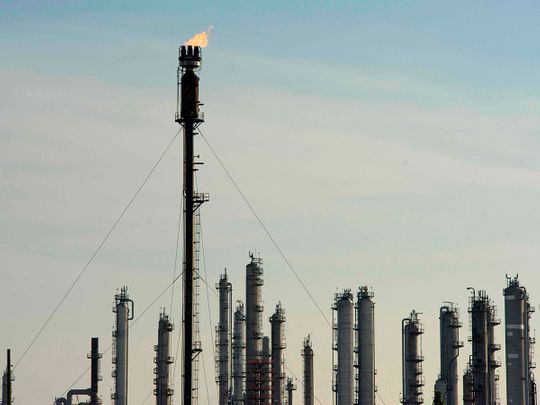
Abu Dhabi: Oil markets continue to maintain their footing in the low to mid $40 range, as markets look for demand growth to sustain any upward price movements beyond their current levels.
Prices on Friday saw a second weekly gain with global benchmark Brent on $44.40 and West Texas Intermediate (WTI) closing at $42.01, coming at gains of 0.9 per cent and 1.9 per cent respectively.
“Volatility in oil markets has been trending significantly lower in recent trading sessions, moving to almost its lowest year-to-date,” said Edward Bell, senior director, market economics, Emirates NBD.
“Most of the action for oil markets now will relate to demand conditions as the market has already priced in the Opec+ supply cuts and adjustments outside of Opec+,” he added.
“For a sharp push higher we expect oil prices would need a much stronger demand signal, either in the form of substantial new stimulus measures or movement toward a coronavirus vaccine.”
And with demand unlikely to see a significant rise, prices are expected to stay where they are according to Paola Rodriguez Masiu, senior oil markets analyst at Rystad Energy.
“The market always sees what lays behind. And a grim demand recovery outlook is a clear background now on a global level.
“Under the current supply-demand trends, we see prices unable to record further sustainable gains for a few months, until supply deficits return during the last quarter of the year,” she added.
Demand projection for this year was also recently downgraded by both Opec and the International Energy Agency (IEA) in their monthly reports, with Opec estimating demand to fall in 2020 by 9.1 million barrels per day and the IEA projecting a fall of 8.1 million barrels.
“Recent mobility data suggest the recovery has plateaued in many regions, although Europe, for now, remains on an upward trend,” The IEA stated in their report. “For road transport fuels, demand in the first half of 2020 was slightly stronger than anticipated, but for the second half we remain cautious and the upsurge in Covid-19 cases has seen us downgrade our estimates, mainly for gasoline.”








